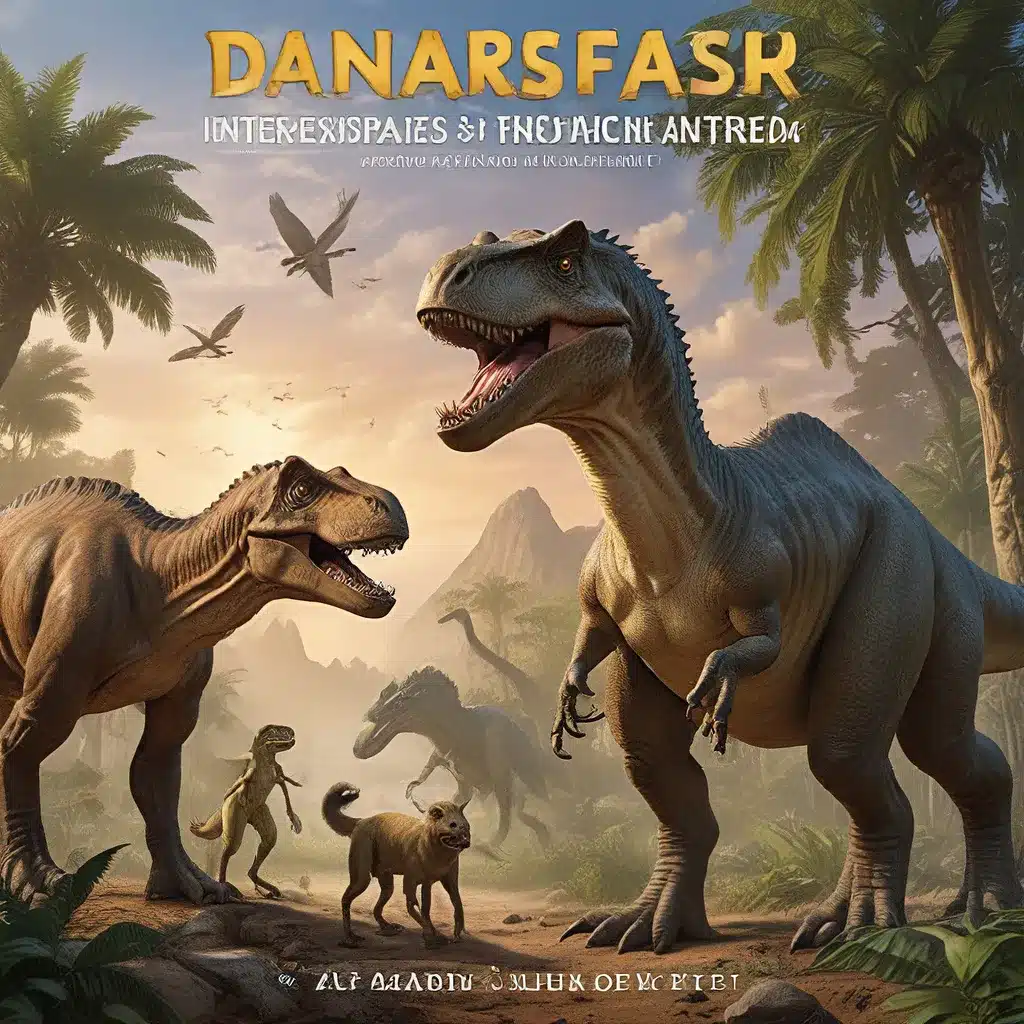
Unveiling the Hidden Histories of Ancient Cohabitation
In the vast expanse of the prehistoric world, the footprints and fossils left behind tell a captivating story of interspecies interactions that have long fascinated scholars and enthusiasts alike. Beyond the iconic depictions of dinosaurs as solitary, apex predators, recent archaeological discoveries have shed light on the complex social dynamics that once existed between these ancient creatures and their environments.
Through meticulous analysis of fossil records and innovative research methods, scientists are uncovering a rich tapestry of relationships that defies our traditional understanding of prehistoric life. From cooperative hunting strategies to symbiotic coexistence, the prehistoric world emerges as a realm of intricate interdependence and sophisticated communication between diverse species.
Cooperative Hunting and the Dawn of Teamwork
One of the most remarkable revelations in the study of dinosaur behavior is the evidence of cooperative hunting. Long believed to be solitary hunters, certain species of dinosaurs are now known to have engaged in coordinated group strategies to take down larger prey. Analyses of fossil trackways have uncovered patterns indicating that some dinosaurs, such as the fearsome Tyrannosaurus rex, may have worked in coordinated packs to overwhelm and subdue their targets.
This newfound understanding challenges the traditional apex predator narrative and suggests a level of social intelligence and strategic planning previously unrecognized in the prehistoric world. Imagine the sight of a pack of Tyrannosaurus stalking their prey, communicating through a complex system of vocalizations and body language to outmaneuver and overcome their quarry. Such insights not only reframe our perception of dinosaur behavior but also illuminate the evolutionary origins of cooperative hunting seen in many modern animal species.
Symbiotic Coexistence and the Dinosaur-Microbe Relationship
Beyond interspecies cooperation, the prehistoric world also boasted remarkable examples of symbiotic coexistence. Emerging research suggests that certain dinosaur species maintained intricate relationships with microbes, enabling them to thrive in diverse ecological niches.
For instance, sauropod dinosaurs, renowned for their massive size and voracious appetites, are now believed to have harbored specialized gut microbiomes that allowed them to efficiently digest the vast quantities of plant matter they consumed. This mutualistic relationship between the dinosaurs and their microbial symbionts not only facilitated the sauropods’ growth and development but also shaped the broader ecosystems in which they lived.
Similarly, other dinosaur species may have relied on symbiotic associations with microbes to aid in disease resistance, nutrient acquisition, or even communication. As we continue to unravel the complex web of prehistoric life, these discoveries underscore the profound interconnectedness that existed between ancient organisms and their environments.
Interspecies Communication and the Dinosaur Social Network
Alongside cooperative hunting and symbiotic coexistence, the prehistoric world also witnessed sophisticated forms of interspecies communication. Paleontological evidence suggests that many dinosaur species possessed advanced vocalizations, ranging from deep, resonating roars to intricate, bird-like calls, which they likely used to convey a variety of social and behavioral cues.
These vocalizations may have served to coordinate group activities, warn of impending danger, or even express emotions and social bonds within and between different dinosaur species. The discovery of dinosaur nesting sites and hatcheries further reinforces the notion of complex social structures and parental care within the prehistoric world, suggesting that these ancient creatures were far more than solitary hunters.
By deciphering the acoustic signatures and social behaviors of dinosaurs, researchers are gaining unprecedented insights into the rich tapestry of interspecies interactions that defined the prehistoric landscape. These findings not only challenge our preconceived notions about dinosaur behavior but also illuminate the evolutionary continuity between ancient and modern forms of social communication and collaborative interaction.
Uncovering the Mysteries of Prehistoric Diplomacy
As we continue to explore the vast repositories of paleontological evidence, the prehistoric world reveals itself as a dynamic, interconnected realm where diverse species co-existed, cooperated, and communicated in ways that defy our traditional understanding of the “Age of Dinosaurs.” From the coordinated hunting strategies of tyrannosaurs to the symbiotic relationships that sustained the massive sauropods, these ancient creatures emerge as sophisticated social beings, navigating their environments through a complex web of interspecies diplomacy.
The ongoing research and discoveries in the field of dinosaur paleontology have the power to reshape our perceptions of the prehistoric past, challenging us to reimagine the intricate social and ecological tapestry that once defined our planet. By delving deeper into the hidden histories of dinosaur behavior and interspecies interactions, we not only uncover the mysteries of the distant past but also gain invaluable insights into the evolutionary processes that have shaped the natural world we inhabit today.


